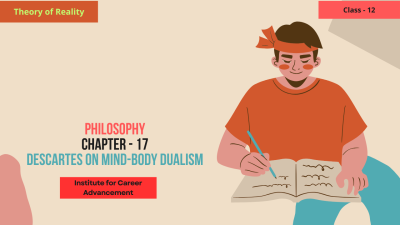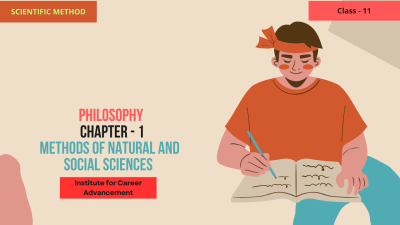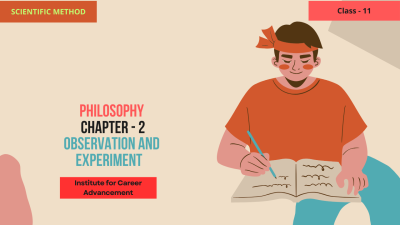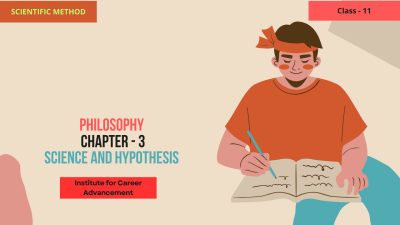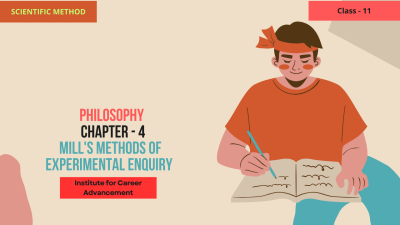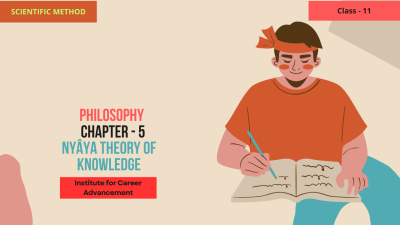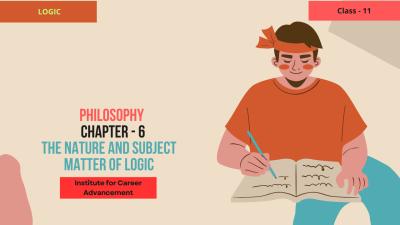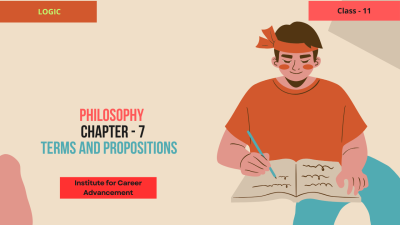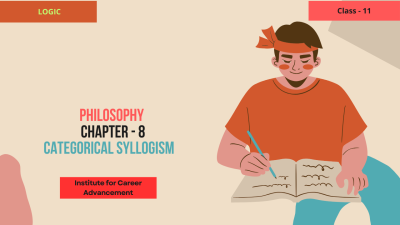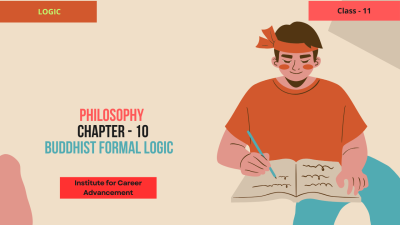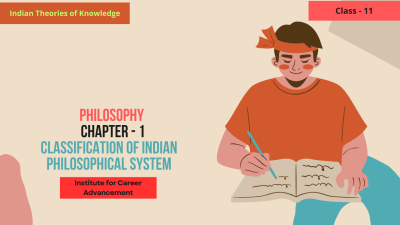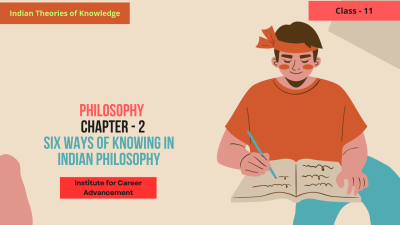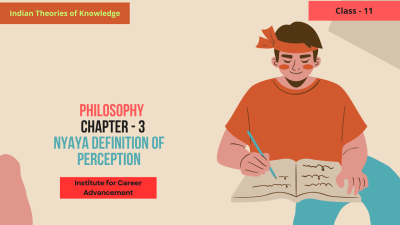Course description
In the Class 12 philosophy curriculum, Descartes on Mind-Body Dualism is a crucial topic that introduces students to one of the most important theories in the philosophy of mind. The course typically explores René Descartes' concept of dualism, which posits that the mind and the body are two distinct substances. Here's an overview of the topic:
Course Overview: Descartes on Mind-Body Dualism
1. Introduction to Descartes and Dualism
René Descartes (1596–1650): A French philosopher and mathematician often considered the father of modern philosophy.
Mind-Body Dualism: Descartes' central philosophical theory, which suggests that humans consist of two separate and fundamentally different substances: the mind (a non-material, thinking substance) and the body (a material, extended substance).
2. The Nature of the Mind and Body
Mind (Res Cogitans): The thinking, non-material substance. The mind is conscious, has thoughts, feelings, and is capable of reasoning. Descartes argued that the mind is indivisible and cannot be physically located in space.
Body (Res Extensa): The physical, material substance. The body is extended in space, divisible, and subject to the laws of physics. It interacts with the material world and can be studied scientifically.
3. The Mind-Body Relationship
Interaction: Descartes suggested that while the mind and body are separate, they interact with each other. The pineal gland, located in the brain, was thought by Descartes to be the point where the mind and body interact.
Problem of Interaction: Critics of dualism, like Princess Elisabeth of Bohemia, questioned how two entirely different substances (the non-material mind and the physical body) could influence one another. This remains a central problem in the philosophy of mind.
4. Descartes' Famous Proposition: "Cogito, ergo sum"
"I think, therefore I am": Descartes' foundational statement, which emphasizes that the act of thinking proves the existence of the self as a thinking being. The mind, for Descartes, is certain and indubitable, unlike the physical world, which can be doubted.
The mind’s existence is independent of the body and the physical world.
5. Philosophical Implications
The Nature of Consciousness: Descartes' dualism laid the groundwork for discussions on the nature of consciousness, self-awareness, and the mind-body connection.
Modern Philosophy and Psychology: Descartes’ dualism influenced later thinkers and the development of modern psychology, particularly in understanding how mental processes relate to physical states of the brain.
Scientific and Ethical Considerations: Dualism also has implications in fields like neuroscience and ethics, especially when discussing the mind's role in personal identity, free will, and moral responsibility.
6. Criticisms of Descartes' Dualism
Interaction Problem: How can two distinct substances (mind and body) interact without a clear mechanism?
Materialism: Philosophers like Thomas Hobbes and later behaviorists rejected dualism, arguing that everything, including thought and consciousness, is a result of material processes in the brain.
Monism: Alternative theories, such as monism, argue that the mind and body are not separate substances but one unified substance.
7. Conclusion
The study of Descartes on Mind-Body Dualism provides students with an understanding of the historical roots of contemporary debates on the nature of the mind, consciousness, and personal identity. It encourages critical thinking about how mental and physical processes relate, which is still a key issue in philosophy, psychology, and neuroscience today.
Learning Objectives:
Understand Descartes' theory of mind-body dualism.
Explain the concepts of Res Cogitans (mind) and Res Extensa (body).
Analyze Descartes' famous proposition "Cogito, ergo sum" and its implications.
Explore the philosophical problems related to the mind-body interaction.
Evaluate criticisms of Descartes’ dualism, such as the problem of interaction and materialism.
Key Skills Developed:
Critical thinking: Ability to assess the strengths and weaknesses of Descartes' dualism.
Analytical skills: Analyzing the relationship between mental and physical substances.
Philosophical inquiry: Engaging with foundational philosophical questions about consciousness, the self, and reality.
Argumentation: Building and presenting arguments for or against dualism based on logical reasoning.
In summary, this course unit provides students with a foundational understanding of Descartes' Mind-Body Dualism, its implications in the history of philosophy, and its influence on modern debates about the nature of consciousness and the self. It also encourages students to critically assess dualism’s strengths, challenges, and contemporary relevance.
দ্বাদশ শ্রেণির দর্শনের পাঠ্যক্রমে, মন-দেহ দ্বৈতবাদের উপর ডেসকার্টেস একটি গুরুত্বপূর্ণ বিষয় যা শিক্ষার্থীদের মনের দর্শনের অন্যতম গুরুত্বপূর্ণ তত্ত্বের সাথে পরিচয় করিয়ে দেয়। কোর্সটি সাধারণত রেনে ডেসকার্টেসের দ্বৈতবাদের ধারণাটি অন্বেষণ করে, যা মনে করে যে মন এবং শরীর দুটি স্বতন্ত্র পদার্থ। এখানে বিষয়টির একটি সংক্ষিপ্ত বিবরণ দেওয়া হলঃ
কোর্স ওভারভিউঃ মন-দেহ দ্বৈতবাদের বিবরণ
1টি। ডেসকার্টেস এবং দ্বৈতবাদের পরিচিতি
রেনে ডেসকার্টেস (1596-1650) একজন ফরাসি দার্শনিক এবং গণিতবিদ যাকে প্রায়শই আধুনিক দর্শনের জনক হিসাবে বিবেচনা করা হয়।
মন-দেহ দ্বৈতবাদঃ ডেসকার্টেসের কেন্দ্রীয় দার্শনিক তত্ত্ব, যা পরামর্শ দেয় যে মানুষ দুটি পৃথক এবং মৌলিকভাবে ভিন্ন পদার্থ নিয়ে গঠিতঃ মন (একটি অ-বস্তুগত, চিন্তাশীল পদার্থ) এবং শরীর (একটি উপাদান, বর্ধিত পদার্থ)।
2. মন ও দেহের প্রকৃতি
মন (রেস কোগিটানস) চিন্তা, অ-বস্তুগত পদার্থ। মন সচেতন, চিন্তাভাবনা, অনুভূতি এবং যুক্তি করতে সক্ষম। ডেসকার্টেস যুক্তি দিয়েছিলেন যে মন অবিভাজ্য এবং মহাকাশে শারীরিকভাবে অবস্থিত হতে পারে না।
শরীর (রেস এক্সটেনসা) শারীরিক, বস্তুগত পদার্থ। বস্তুটি মহাকাশে প্রসারিত, বিভাজ্য এবং পদার্থবিজ্ঞানের নিয়মের সাপেক্ষে। এটি বস্তুগত জগতের সঙ্গে মিথস্ক্রিয়া করে এবং বৈজ্ঞানিকভাবে অধ্যয়ন করা যেতে পারে।
3. মন-দেহের সম্পর্ক
মিথস্ক্রিয়াঃ ডেসকার্টেস পরামর্শ দিয়েছিলেন যে মন এবং শরীর পৃথক হলেও তারা একে অপরের সাথে মিথস্ক্রিয়া করে। মস্তিষ্কে অবস্থিত পাইনিয়াল গ্রন্থিকে ডেসকার্টেস মন এবং দেহের মিথস্ক্রিয়া বিন্দু হিসাবে ভেবেছিলেন।
মিথস্ক্রিয়ার সমস্যাঃ বোহেমিয়ার রাজকুমারী এলিজাবেথের মতো দ্বৈতবাদের সমালোচকরা প্রশ্ন তুলেছিলেন যে কীভাবে দুটি সম্পূর্ণ ভিন্ন পদার্থ (অ-বস্তুগত মন এবং শারীরিক দেহ) একে অপরকে প্রভাবিত করতে পারে। মনের দর্শনে এটি একটি কেন্দ্রীয় সমস্যা হিসাবে রয়ে গেছে।
4. ডেসকার্টেসের বিখ্যাত প্রস্তাবঃ "কোগিটো, এরগো সাম"
"আমি মনে করি, তাই আমি আছি": ডেসকার্টেসের মৌলিক বিবৃতি, যা জোর দেয় যে চিন্তাভাবনার কাজ একটি চিন্তাশীল সত্তা হিসাবে আত্মার অস্তিত্ব প্রমাণ করে। দেকার্তের কাছে মন নিশ্চিত এবং দ্ব্যর্থহীন, ভৌত জগতের মতো নয়, যা নিয়ে সন্দেহ করা যেতে পারে।
মনের অস্তিত্ব শরীর এবং ভৌত জগত থেকে স্বাধীন।
5. দার্শনিক প্রভাব
চেতনার প্রকৃতিঃ দেকার্তের দ্বৈতবাদ চেতনার প্রকৃতি, আত্ম-সচেতনতা এবং মন-দেহের সংযোগ নিয়ে আলোচনার ভিত্তি স্থাপন করেছিল।
আধুনিক দর্শন ও মনোবিজ্ঞানঃ দেকার্তের দ্বৈতবাদ পরবর্তী চিন্তাবিদ এবং আধুনিক মনোবিজ্ঞানের বিকাশকে প্রভাবিত করেছিল, বিশেষত মানসিক প্রক্রিয়াগুলি মস্তিষ্কের শারীরিক অবস্থার সাথে কীভাবে সম্পর্কিত তা বোঝার ক্ষেত্রে।
বৈজ্ঞানিক ও নৈতিক বিবেচনাঃ স্নায়ুবিজ্ঞান এবং নীতিশাস্ত্রের মতো ক্ষেত্রেও দ্বৈতবাদের প্রভাব রয়েছে, বিশেষত যখন ব্যক্তিগত পরিচয়, স্বাধীন ইচ্ছা এবং নৈতিক দায়িত্বের ক্ষেত্রে মনের ভূমিকা নিয়ে আলোচনা করা হয়।
6টি। ডেসকার্টেসের দ্বৈতবাদের সমালোচনা
মিথস্ক্রিয়া সমস্যাঃ একটি স্পষ্ট প্রক্রিয়া ছাড়া দুটি স্বতন্ত্র পদার্থ (মন ও শরীর) কীভাবে মিথস্ক্রিয়া করতে পারে?
বস্তুবাদঃ থমাস হবস এবং পরবর্তী আচরণবাদীদের মতো দার্শনিকরা দ্বৈতবাদকে প্রত্যাখ্যান করেছিলেন, যুক্তি দিয়েছিলেন যে চিন্তা এবং চেতনা সহ সবকিছুই মস্তিষ্কের বস্তুগত প্রক্রিয়াগুলির ফল।
একত্ববাদঃ একত্ববাদের মতো বিকল্প তত্ত্বগুলি যুক্তি দেয় যে মন এবং শরীর পৃথক পদার্থ নয় বরং একটি একীভূত পদার্থ।
7. উপসংহার
মন-দেহ দ্বৈতবাদের উপর ডেসকার্টেসের অধ্যয়ন শিক্ষার্থীদের মনের প্রকৃতি, চেতনা এবং ব্যক্তিগত পরিচয়ের উপর সমসাময়িক বিতর্কের ঐতিহাসিক শিকড়গুলি বোঝার সুযোগ করে দেয়। এটি মানসিক এবং শারীরিক প্রক্রিয়াগুলি কীভাবে সম্পর্কিত সে সম্পর্কে সমালোচনামূলক চিন্তাভাবনাকে উৎসাহিত করে, যা আজও দর্শন, মনোবিজ্ঞান এবং স্নায়ুবিজ্ঞানের একটি মূল বিষয়।
শেখার উদ্দেশ্যঃ
ডেসকার্টেসের মন-দেহ দ্বৈতবাদের তত্ত্বটি বুঝুন।
রেস কোগিটানস (মন) এবং রেস এক্সটেনসা (শরীর)-এর ধারণাগুলি ব্যাখ্যা করুন।
ডেসকার্টেসের বিখ্যাত প্রস্তাব "কোগিটো, এরগো সাম" এবং এর প্রভাবগুলি বিশ্লেষণ করুন।
মন-দেহের মিথস্ক্রিয়া সম্পর্কিত দার্শনিক সমস্যাগুলি অন্বেষণ করুন।
দেকার্তের দ্বৈতবাদের সমালোচনাগুলি মূল্যায়ন করুন, যেমন মিথস্ক্রিয়া এবং বস্তুবাদের সমস্যা।
বিকশিত মূল দক্ষতাঃ
সমালোচনামূলক চিন্তাভাবনাঃ ডেসকার্টেসের দ্বৈতবাদের শক্তি এবং দুর্বলতাগুলি মূল্যায়ন করার ক্ষমতা।
বিশ্লেষণাত্মক দক্ষতাঃ মানসিক এবং শারীরিক পদার্থের মধ্যে সম্পর্ক বিশ্লেষণ করা।
দার্শনিক অনুসন্ধানঃ চেতনা, স্ব এবং বাস্তবতা সম্পর্কে মৌলিক দার্শনিক প্রশ্নের সাথে জড়িত।
যুক্তিঃ যুক্তিসঙ্গত যুক্তির উপর ভিত্তি করে দ্বৈতবাদের পক্ষে বা বিপক্ষে যুক্তি তৈরি করা এবং উপস্থাপন করা।
সংক্ষেপে, এই কোর্স ইউনিটটি শিক্ষার্থীদের দেকার্তের মন-দেহ দ্বৈতবাদ, দর্শনের ইতিহাসে এর প্রভাব এবং চেতনা এবং স্ব সম্পর্কে আধুনিক বিতর্কে এর প্রভাব সম্পর্কে একটি মৌলিক ধারণা প্রদান করে। এটি দ্বৈতবাদের শক্তি, চ্যালেঞ্জ এবং সমসাময়িক প্রাসঙ্গিকতা সমালোচনামূলকভাবে মূল্যায়ন করতে শিক্ষার্থীদের উৎসাহিত করে।

